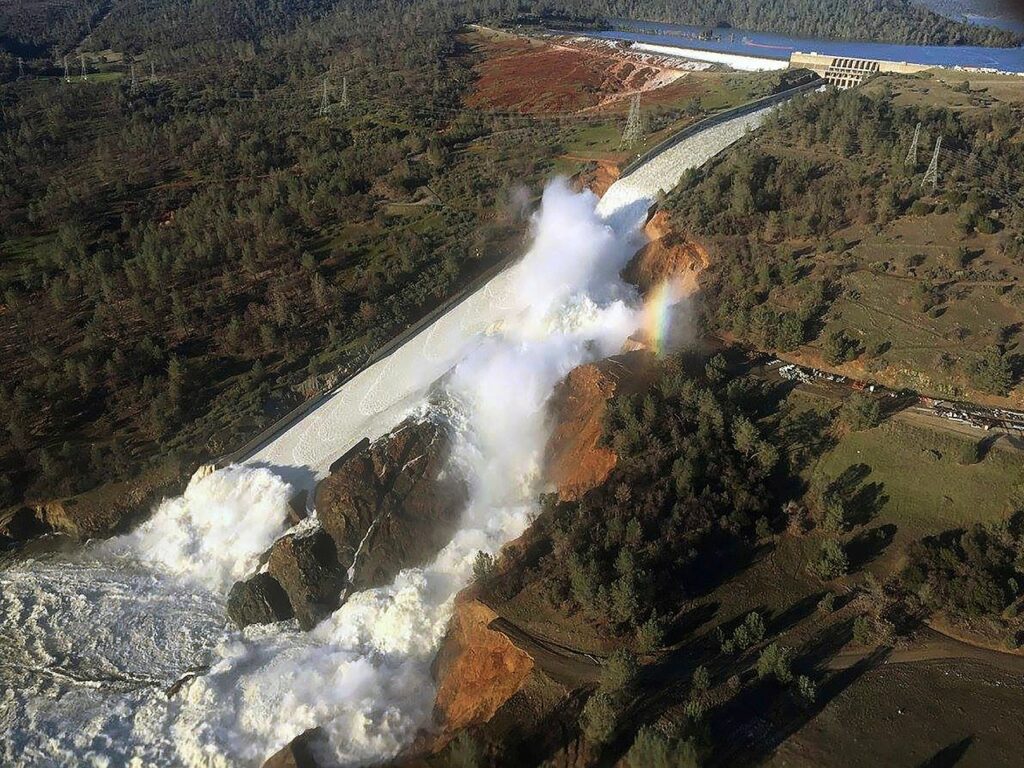
Climate change makes catastrophic flood twice as likely
UCLA-led research is first piece of ArkStorm 2.0 flood disaster preparation
California lives with a sleeping giant — an occasional flood so large that it inundates major valleys with water flows hundreds of miles long and tens of miles across.
Motivated by one such flood that occurred in 1862, scientists investigated the phenomenon in 2010. They called it the “ArkStorm scenario,” reflecting the potential for an event of biblical proportions.
To account for the additional flood-worsening effects of climate change, scientists from UCLA and the National Center for Atmospheric Research have completed the first part of ArkStorm 2.0.
“In the future scenario, the storm sequence is bigger in almost every respect,” said Daniel Swain, UCLA climate scientist and co-author of the paper, which is published today in the journal Science Advances. “There’s more rain overall, more intense rainfall on an hourly basis and stronger wind.”
In total, the research projects that end-of-the-century storms will generate 200% to 400% more runoff in the Sierra Nevada Mountains due to increased precipitation and more precipitation falling as rain, not snow.
The researchers used a combination of new high-resolution weather modeling and existing climate models to compare two extreme scenarios: one that would occur about once per century in the recent historical climate and another in the projected climate of 2081-2100. Both would involve a long series of storms fueled by atmospheric rivers over the course of a month.
The paper also simulated how the storms would affect parts of California at a local level.
“There are localized spots that get over 100 liquid-equivalent inches of water in the month,” Swain said, referring to the future scenario. “On 10,000-foot peaks, which are still somewhat below freezing even with warming, you get 20-foot-plus snow accumulations. But once you get down to South Lake Tahoe level and lower in elevation, it’s all rain. There would be much more runoff.”
The increased runoff could lead to devastating landslides and debris flows — particularly in hilly areas burned by wildfires.
The paper, which was coauthored by climate scientist Xingying Huang, found that historical climate change has already doubled the likelihood of such an extreme storm scenario, building on previous UCLA research showing increases in extreme precipitation events and more common major floods in California. The study also found that further large increases in “megastorm” risk are likely with each additional degree of global warming this century.
“Modeling extreme weather behavior is crucial to helping all communities understand flood risk even during periods of drought like the one we’re experiencing right now,” said Karla Nemeth, director of the Califiornia Department of Water Resources, which provided funding for the study. “The department will use this report to identify the risks, seek resources, support the Central Valley Flood Protection Plan, and help educate all Californians so we can understand the risk of flooding in our communities and be prepared.”
With drought and wildfire getting so much attention, Californians may have lost sight of extreme flooding, Swain said. “There is potential for bad wildfires every year in California, but a lot of years go by when there’s no major flood news. People forget about it.”
The state has experienced major floods over the years, but nothing on the scale of the Great Flood of 1862. During that disaster — when no flood management infrastructure was in place — floodwaters stretched up to 300 miles long and as wide as 60 miles across in California’s Central Valley. The state’s population then was about 500,000, compared to nearly 40 million today. Were a similar event to happen again, parts of cities such as Sacramento, Stockton, Fresno and Los Angeles would be under water even with today’s extensive collection of reservoirs, levees and bypasses. It is estimated that it would be a $1 trillion disaster, larger than any in world history.

Though no flood so large has happened since, climate modeling and the paleoclimate record — including river sediment deposits dating back thousands of years — shows that it typically happened every 100 to 200 years in the pre-climate change era.
The ArkStorm flood is also known as “the Other Big One” after the nickname of an expected major earthquake on the San Andreas Fault. But, unlike an earthquake, the ArkStorm would lead to catastrophe across a much larger area.
“Every major population center in California would get hit at once — probably parts of Nevada and other adjacent states, too,” Swain said.
The effects on infrastructure would complicate relief efforts, with major interstate freeways such as the I-5 and I-80 likely shut down for weeks or months, Swain said. Economic and supply chain effects would be felt globally.
The first ArkStorm exercise concluded that it would not be possible to evacuate the 5 to 10 million people who would be displaced by flood waters, even with weeks of notice from meteorologists and climatologists. While it helped inform flood planning in some regions, the exercise was limited due to lack of organized resources and funding, Swain said.
California has already seen increases in climate-driven drought and record-breaking wildfires, Swain said. With climate change-amplified flooding, ArkStorm 2.0 aims to get ahead of the curve.
Further research and preparations to respond to such a scenario — including advanced flood simulations supported by the California Department of Water Resources — are planned to follow, Swain said. This will include collaborations with partner agencies including the California Office of Emergency Services and the Federal Emergency Management Agency.
Researchers next hope to map out where flooding could be worst and inform statewide plans to mitigate it. That could mean letting water out of reservoirs preemptively, allowing water to inundate dedicated floodplains and diverting water away from population centers in other ways.
Published:


